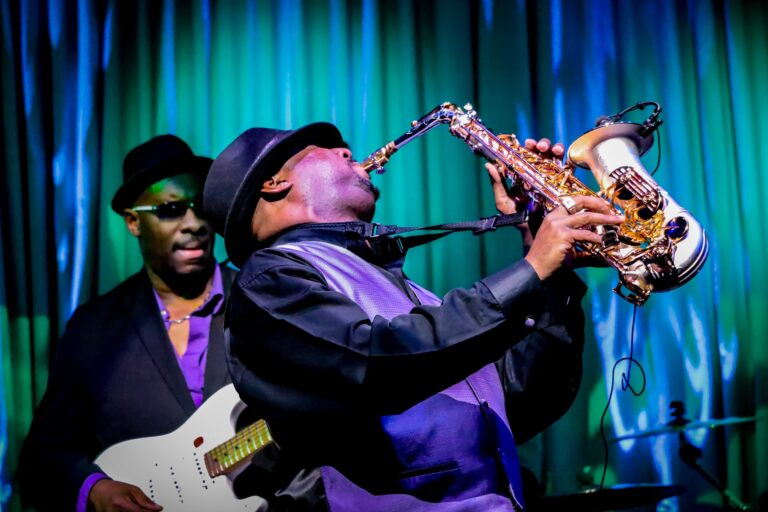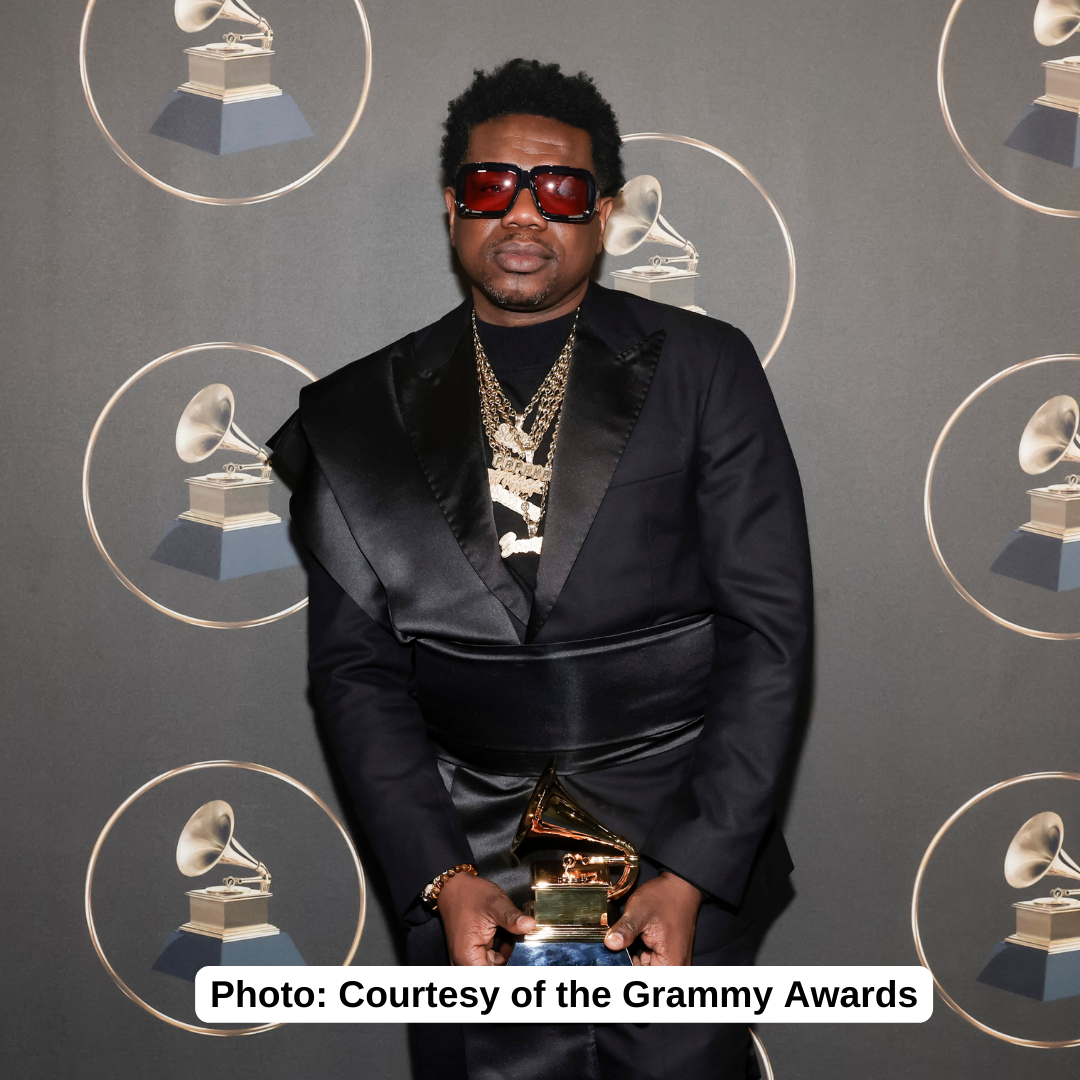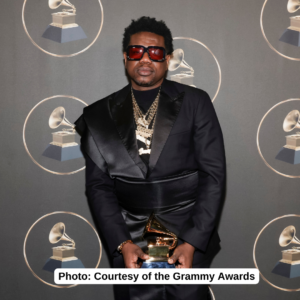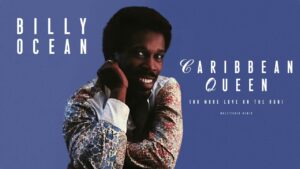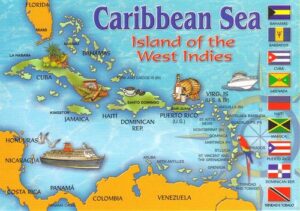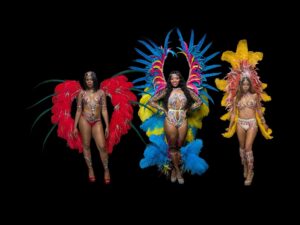The Caribbean area has an extensive and rich musical history. Its music roots connect with socio/cultural events from the indigenous migration to the European colonization, the wars of liberation, and the current Music industry display.
It is incredible the variety of musical genres born from the Caribbean mixture of cultures. Most of these music styles have had a considerable influence on modern music. If you are a fan of music, you will love to learn about this exciting topic. This article presents everything you need to know about the ten most recognized musical genres in the Caribbean.
Calypso
The calypso style is one of the most recognized traditional music in Trinidad and Tobago, San Andrés, and Providencia Islands. Its cultural language and its music are very diverse. As a result, calypso has positioned itself as one of the most influential West Indian areas.
Calypso is a type of African American song strongly related to the musical practices during carnival times. Despite the value of this music, the lyrics are a very distinctive element of this genre. Calypso’s lyrics have a significant social and political relevancy. The songs of calypso use satire, mockery, and double meaning as an essential part of their narrative.
The humorous tonality of this genre also extends to the brand concept of each artist. Calypso singers or groups use satirical phrases in song titles and even personal or group stage names. Examples of this are bands like Lord Melody, The Mighty Spoiler, and Attila the Hun.
In addition to these traditional bands, the Caribbean calypso has been well represented by famous musicians such as Harry Belafonte (United States), Manuel Monestel (Costa Rica), and Walter Ferguson (Costa Rica).
https://www.youtube.com/watch?v=fGAL2hWqWRE Mighty Sparrow
Zouk
The genre Zouk is considered Afro-Caribbean heritage, specifically from the islands of Martinique and Guadeloupe. Its name comes from the word Mazouk that identifies the European genus Mazurka transferred to the Caribbean during European colonization.
Like other Caribbean musical genres such as calypso, Zouk music is known for its speed and danceable character associated with festive and carnival events. Its period of splendor took place in the 70s of the last century. The Franco-Caribbean group Kassav stands out as one of the most recognized Zouk groups.
This musical style has a marked French Antillean character, so it is easy to find in other French Caribbean colonies such as French Guiana. The Zouk was formed through this cultural combination known as misik Zouk. Along with this music, different genres were created, such as the beguine (Martinique and Guadeloupe), the compas (Haiti), the cadence (Haiti), and the cadence-lypso (Haiti / Trinidad and Tobago).
https://www.youtube.com/watch?v=vM1-AopSrZQ Kasav
Reggae
Reggae is one of the most representative genres of Caribbean music. This style emerged in the 60s of the last century. Its training is due to the mixture of contemporary sounds of North American rock and soul, with traditional Jamaican music such as Calypso and Ska.
Some researchers believe that Reggae comes from a musical experiment caused by slowing down the tempo when playing Ska Music. Hence, various Ska Music groups became the first groups to perform Reggae. We can mention the group Heptones, the artist Alton Ellis, Toots and the Maytals, The Wailers, and Jimmy Cliff. Later, Reggae began to occupy an influential place in the modern music industry. However, its most prominent representative, Bob Marley, influences music without limits throughout the American continent.
https://www.youtube.com/watch?v=0hKc-mxGp-g Jimmy Cliff
Salsa
Salsa is a unique musical style born from the boom of the music industry in the United States during the second half of the last century. As a result, this genre has a privileged place in the Latin American music market.
Although many people do not know it, salsa emerges as a commercial version of Cuban son music, popularized mainly in New York. Later, the genre was transferred to other cities and countries such as Colombia, Puerto Rico, Venezuela, and the Dominican Republic.
The music of the salsa genre combines rhythmic elements of traditional Cuban son with more modern sounds from jazz and the big band style. The community of Afro-Caribbean musicians based in New York was the most responsible for shaping this style. Among them, artists such as Frank Grillo “Machito” (Cuba), Tito Puente (Puerto Rico), Tito Rodríguez (Puerto Rico), and Celia Cruz (Cuba) stand out.
https://www.youtube.com/watch?v=TgXWF1gwNSY El Grand Combo
Bachata
Bachata is known internationally as a genre originating in the Dominican Republic. However, its roots evoke musical elements from other countries such as Cuba and Puerto Rico. Hence, his most direct musical antecedents of the style are the bolero and the Cuban son.
At first, Bachata was recognized by the name fandango. This term appears in the Caribbean area through Hispanic heritage. Fandango used to name various types of songs mainly used at home or village parties. However, the Dominicans used it to distinguish the kind of song used in vulnerable urban areas throughout the Antillean Caribbean.
The Bachata genre was born at the beginning of the 20th century. Despite this, this music style did not reach its fame until the end of the century, during the 80s / 90s. The first internationally recognized Bachata composer was the Dominican José Manuel Calderón. Some of the most influential ‘bachateros’ in the music industry are Juan Luis Guerra, Anthony “Romeo” Santos, and Prince Royce.
https://www.youtube.com/watch?v=SRLRCCffvlA Juan Luis Guerra
Merengue
The merengue style is another of the Caribbean genres originating from the Dominican Republic. However, due to the stickiness and power of his music, it has been extended to other regions of Latin America such as Colombia, Puerto Rico, Haiti, and Venezuela.
The musical structure of the merengue style comes from the fusion of the Creole and the European contradanza. The flavor of its peculiar sound is derived mainly from special instruments such as the Tambora and the güira. The merengue also contemplates a specific type of dance strongly influenced by the European (ballroom) and Afro-Cuban (rumba) dance.
Some of the most famous merengues interpreters are Juan Luis Guerra, Los Hermanos Rosario, Olga Tañon, Johnny Ventura, Grupomanía and Elvis Crespo.
https://www.youtube.com/watch?v=ruVSvx5BmIY Johnny Ventura
Quelbe
Quelbe music has its origins in the mixing of musical cultures in the US Virgin Islands and England. This musical genre comes from African-American cultures and their confluence with European cultures such as British, French, German, Spanish, Irish, etc.
The Quelbe style is known as the standard model of the typical folk song of these islands. However, the genre stands out for the unmatched sound of its instrumental format known as the Scratch.
The unparalleled sound of this genre prevails in the most current productions of this territory. Stanley and the Ten Sleepless Nights; Jamesie and the Allstars; and Blinky and the Roadmasters are among the most crucial Quelbe music groups in the US Virgin Islands. On the other hand, Lashing Dogs and Loverboys stand out as the representative quelbe groups of the Virgin Islands of England.
https://www.youtube.com/watch?v=wyTFqTPd764 Stanley and the Ten Sleepless Knights
Cumbia
Cumbia is a style of music from the Latin American Caribbean, mainly from Colombia and other areas of South America. This music is born from the confluence of African, indigenous, and European cultures on the continent. Specifically, its most significant influences were the African cumbé and the Spanish fandango.
The mobile nature of cumbia allowed its proliferation in Argentina, Uruguay, Venezuela, Peru, etc. As a result, this genre is possibly one of the styles with the most incredible adaptability in the Latin American continent.
Like other Afro-Latin genres, cumbia arises as part of the musician-dance accompaniment of festive carnival events. As a result, his music has representatives throughout Latin America. Some of the most relevant are Selena, Los Mirlos, Cabas, Bomba Estéreo, Grupo Niche, Calso Piña, Kumbia Kings, among others.
https://www.youtube.com/watch?v=EvJHm2AXydA Grupo Niche
Cuban rumba
The rumba is one of the most attractive genres on the Cuban sound scene. This style had its origin in the 19th century, but it did not reach international recognition until the 20th century.
Rumba is a very different term. It’s recognized as a party, dance, or ‘toque’ (religious or irreligious ritual) of a profane type. However, its musical essence is the rhythmic framework played by percussion instruments.
Rumba music reveals the presence of a cultural combination of Afro-Cuban sounds. Also, this genre has three musical variants: yambú, Columbia, and guaguancó.
The rumba is performed by large groups that include a mixed choir of 4 or more people, percussion instruments (idiophones and membranophones). Among the most recognized rumbas groups are Los Papines, Los Muñequitos de Matanzas, Clave y Guaguancó, Rumbatá, among others.
https://www.youtube.com/watch?v=Dc8aFBn7nA8 Rumbata
Compas
The compas, konpa or kompa, is one of the genres that has marked the musical modernity of the Caribbean territory, Haiti. This musical style emerged in the 50s of the last century. Its name is due to the way of calling rhythm or tempo sequence in Western music, compass.
The Caribbean musical styles that most influenced the formation of the compa genre were the Dominican merengue, the Puerto Rican bomba, the Jamaican calypso, and the Cuban son.
Some references allege that this genre is a type of “modern merengue,” a musical form from the Dominican Republic. However, the compa style has represented the Haitian region through artists such as Nemours Jean Baptiste and Webert Sicot.
https://www.youtube.com/watch?v=xf–hDWSxcg Webert Sicot
We hope you’ll enjoy and appreciate the diverse music of the Caribbean.
By: Yami Cabrera

